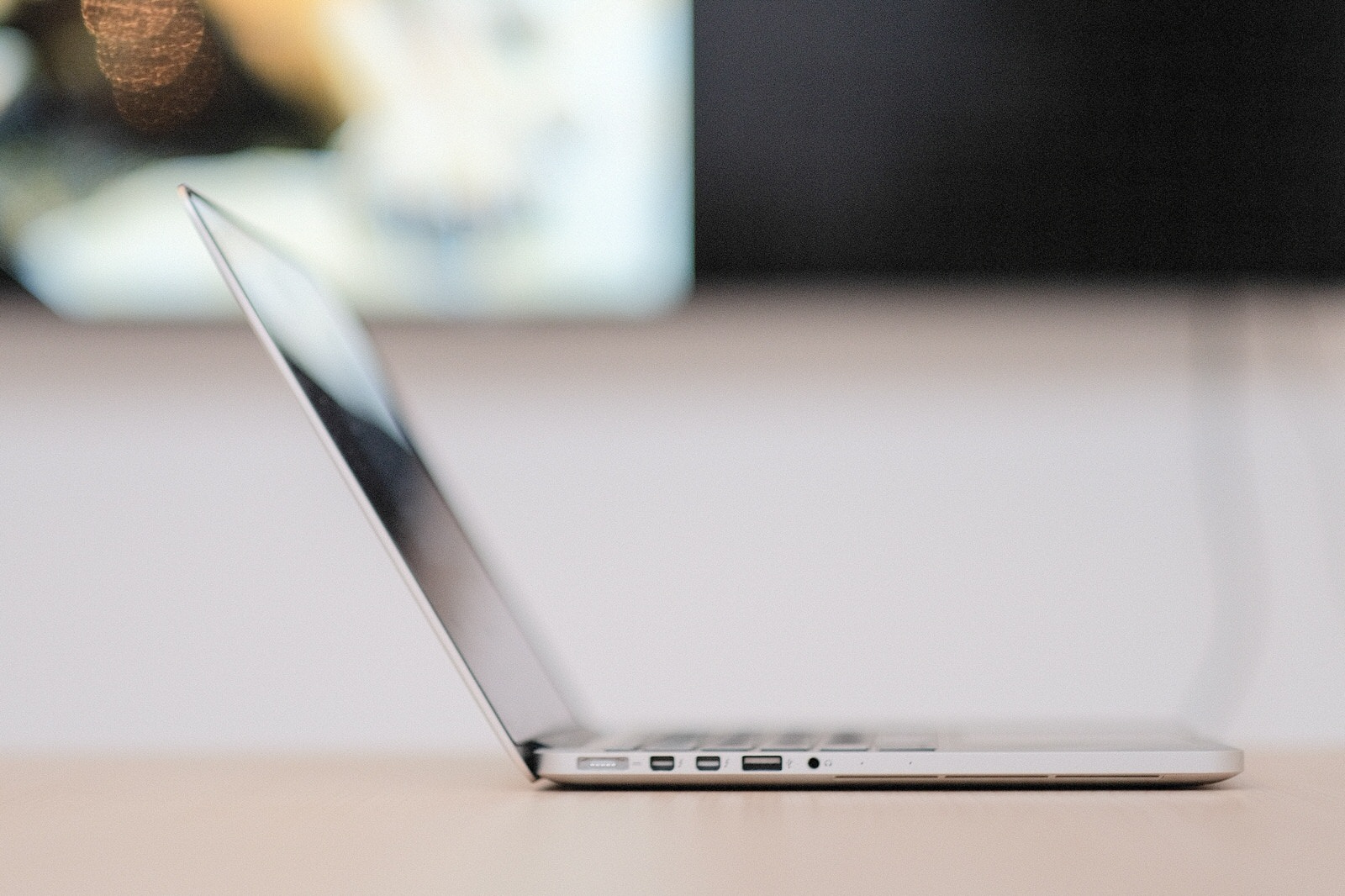Update: I found this post on Tom's Hardware that clarifies my confusion around USB 3.0 and USB 3.1. It seems that USB 3.0 is USB 3.1 Gen 1. There is also USB 3.1 Gen 2 that may or may have a USB-C connector but most likely does. So ... I think I can future proof most of my storage by purchasing some low-cost USB 3.1 Gen 2 hard drive enclosures with USB-B ports.
Ok. I have spent way too much time thinking about USB-C and future Mac and peripheral purchases. I have been fuming and reading a lot of articles and blog posts about Apple's decision to ship the new MacBook Pro with nothing but USB-C ports. Some positive, some negative, and some merely informational. Micheal Tsai has compiled a list of many of these posts.
I have experienced four of the five stages of grief. I denied all the pre-announcement rumours that suggested that Apple would go USB-C only and remove the SD card slot and mini Display Port. I was fuming when Phil Schiller revealed that this was happening. I skipped bargaining and went next to depression. I had trouble sleeping over the Diwali weekend, trying to understand how Apple could do this to me. I am finally at the acceptance stage and looking for a way forward — a way to salvage my investment in peripherals while also embracing the new.
My head was full of thoughts of buying a new MacBook Pro and setting it on fire and uploading a video to YouTube in protest. But that's childish and financially reckless and most likely no-one at Apple (or anywhere else) would see my video or care.
But the more I thought about it, the more Apple's decision seemed right. The timing was just not right for me. USB-C is the future, but the present is still demanded compatibility with everything else. I wanted to go to USB-C heaven, but I didn't want my setup to die to get there.
I see no inexpensive solution that works for me in the long term. I don’t want to buy USB-C port devices that won’t connect to my current Macs without adapters, and I don’t want to buy a new USB-C port only Mac that can’t connect to existing equipment. I don’t want to invest in adapters and cables that I will only have to throw away in a few years when everything becomes USB-C. USB-C may be the future, but the present still includes USB-A, HDMI, and Thunderbolt.
Despite the advantages of USB-C, Thunderbolt, USB-A, DVI and even old VGA won’t merely disappear as USB Type-C ports become available. While Windows PC manufacturers are shipping new machines with USB-C ports, they still include “legacy” ports like USB-A and HDMI. This transition is going to be long, painful and expensive for Mac users who invested in external Thunderbolt drives and displays. A USB-A to USB-C adapters is cheaper than a Thunderbolt to USB-C adapter (assuming you can find the latter).
I have thought through the least painful way forward financially and practically. I need practical and inexpensive solutions for connecting external displays, USB-A and Thunderbolt 1 devices.
[table id=1 /]
Display
Some of the conference rooms I may find myself working in have HDMI or DVI connectors for external displays while many others have VGA only connectors. For the days when I know, I have a presentation, I will often borrow my wife’s MacBook Air. Initially I bought three separate Apple adapters — one each for HDMI, VGA and DVI — but eventually ( about a year later ) the market responded with Thunderbolt/Mini Display Port cables that include all three display connector types.
But, being a new standard, USB-C adapters are not cheap. For example, Apple is charging $80 for one that will allow users to connect an HDMI cable and a standard USB plug to a Type-C port. As I mentioned, I often need to connect to HDMI, VGA or DVI. If I bought the new MacBook Pro, I would need an adapter for each display type. My research so far did not turn up any solutions for a USB-C to HDMI/DVI/VGA, and I don’t expect most organisations will update expensive conference rooms displays to support USB-C connectors anytime soon.
Princeton University has a long history of Mac usage on campus, and currently, 60% of the students use Macs and probably most of the professors as well. Just so that educators can connect to the DVI projectors, the conference rooms and classrooms podiums at Princeton University have at least five different Apple adapters for each iteration of display port that Apple has offered over the last seven years.
Storage
I also have a stack of USB thumb drives, two of which are MacOS installation thumb drives (hey, Chris, I need my thumb drive back), and a few encrypted drives where I keep sensitive documents. I would need adapters to use my existing flash drive or buy USB-C flash drives. Some high-speed flash drives have dual connectors — USB-A on one end and USB-C on the other. There is a company called Roofull selling inexpensive compact USB 3.0 flash drives with USB-A/USB-C connectors on either end.
I did not do an exhaustive search, but I did not find any encrypted drives that have USB-C connectors. While I could use the encryption built into macOS, I would prefer a solution that also works with Windows.
In 2010, as part of my strategy for easing the transition between future Mac purchases, I had started storing my files on external drives. My family was growing up, and my (then) tweens were listening to more music. We also started buying move movies, and the iTunes media library was growing quickly and was exhausting the internal hard drive of the previous iMac. I had upgraded my digital camera, and my Adobe Lightroom library was increasing rapidly. My solution was to move both of those libraries to separate external drives. Each library could grow independently. When the Lightroom catalogue became close to the capacity of the drive, it was easy to buy a new drive and move my files. I also had separate external drives for backup of the iMac, and yet another drive that had a CrashPlan backup of the other three. All four of these drives are Mercury Elite Pro FireWire 400/800/eSATA/USB-A drive enclosures from OWC computing.
When I purchased my 2013 iMac, I admittedly did not think things through. The 2013 iMac shipped with two Thunderbolt 1 ports and four USB 3.0 USB-A ports. Connecting my four drives would use all four USB ports, and I would be limited to USB 3.0 speeds or worse 2.0 when I connected slower/older equipment. I am also not sure how USB 3.0 holds up when copying large data sets between two drives.
I opted to buy two $60 FireWire to Thunderbolt cables at the Apple Store, connect two of the drives and then daisy chain the other two via FireWire. It’s a kludge, but it was the least expensive solution available at the time. There were few inexpensive high-capacity Thunderbolt 1 drives available in 2013. There is still only a few available today.
For a future USB-C only iMac I can use USB-C to USB-A adapters to connect the existing drive, but I would need four of them or a USB-C to USB-A four-port hub. I found one USB-C to Thunderbolt 1 adapter, but I could not find any USB-C to Thunderbolt 1 hubs. My data speed would be limited to USB 3.0 speeds.
My future external drive purchases should be Thunderbolt 3. The only Thunderbolt 3 drives I could find were portable, not the high-performance desktop drives that I want. Hopefully OWC and others will offer solutions soon.
Fortunately, USB-C to USB-A and USB-C to Thunderbolt 1 cables are available to allow USB-C drives to connect to my current iMac.
SD Card Reader
Professional, semi-professional, and advanced amateur photographers are not going to be happy. You will need an adapter to dump images from your camera. To those people who would suggest plugging in the camera to USB to dump pictures, “You are a fracking idiot”. Many pro photographers are shooting back to back gigs. They will want to use different SD cards for each client, downloading the images from SD cards when they have the time or downloading from one card while shooting the next gig on the other.
None of these cameras has USB-C, and almost all use some proprietary port with a USB-A cable. To connect those cameras directly to a USB-C only Mac would require using the cable that came with the camera and then connecting it to a female USB-A to USB-C adapter. Kludgy. I don’t know any professional photographer who does this.
Adobe software runs on Windows. So unless they have invested in a lot of MacOS only software, many of these professionals can quickly switch to Windows. Many of these same professionals remember the knife in the back when Apple sold them and expensive update to Aperture and then dropped all development just two years later.
The Dock
One solution I am looking into now is a USB-C. OWC sells one which provides five of USB-A connectors, Thunderbolt, Gigabit Ethernet, HDMI and combo audio ports along with an SD card reader. However, it’s $200 on Amazon.com and will only be useful with existing equipment and would be a yet-another-interim-adapter solution. If I later buy USB-C Thunderbolt 3 external storage or display, the dock becomes useless, and I am back to buying dongles to attach a new MacBook to the older equipment I typically find in conference rooms.
At this time, OWC is testing the Dock with the new MacBook Pro and will only confirm that it works with the MacBook. I understand their caution, but I don’t see why there would be any issues.
Hello Khurt thank you for your inquiry! Regrettably, at this time we cannot confirm support for any of our products with the newly released MacBook Pros, but we are working on compatibility testing and will update the product page accordingly when we have that information! In theory, the USB C dock should work with the new MacBook Pro we just have not finished testing to be able to support that at this time.OWC Support
And the OWC Dock has some limitations.
The USB 3.1 Gen 1 Type-C port on the back of the dock (between the USB Standard-A ports and the Ethernet port) can carry only data and power. It does not support video signals or video adapters. Only the HDMI port can be used to add a display, by connecting an HDMI 1.4b compatible screen. Displays that use resolutions at or above 1080p require an HDMI High-Speed cable.OWC Knowledge Base
Another dock option mentioned by Dave Hamilton on the Mac Geek Gab Podcast is the Caldigit USB-C dock which you can buy on Amazon.com. The pricing, at $150, is similar to the OWC Dock.
What to do? Wait.
I think the best way forward is to wait. Wait for more inexpensive Thunderbolt 3 external desktop drives to appear on the market. Wait for third-party vendors to fill the market with cheap cables and adapters. That may take about two or three years.
My 2013 iMac and my wife’s 2013 MacBook Air may need replacing just around that time. I can then upgrade both devices. The Air will no longer exist, but the MacBook has already replaced that for most people. Hopefully, in 2019, I will be able to buy a new iMac with six or more USB-C ports. By then, I will either have replaced the drive enclosures for my existing storage with USB-C variants or will have purchased new storage devices.



